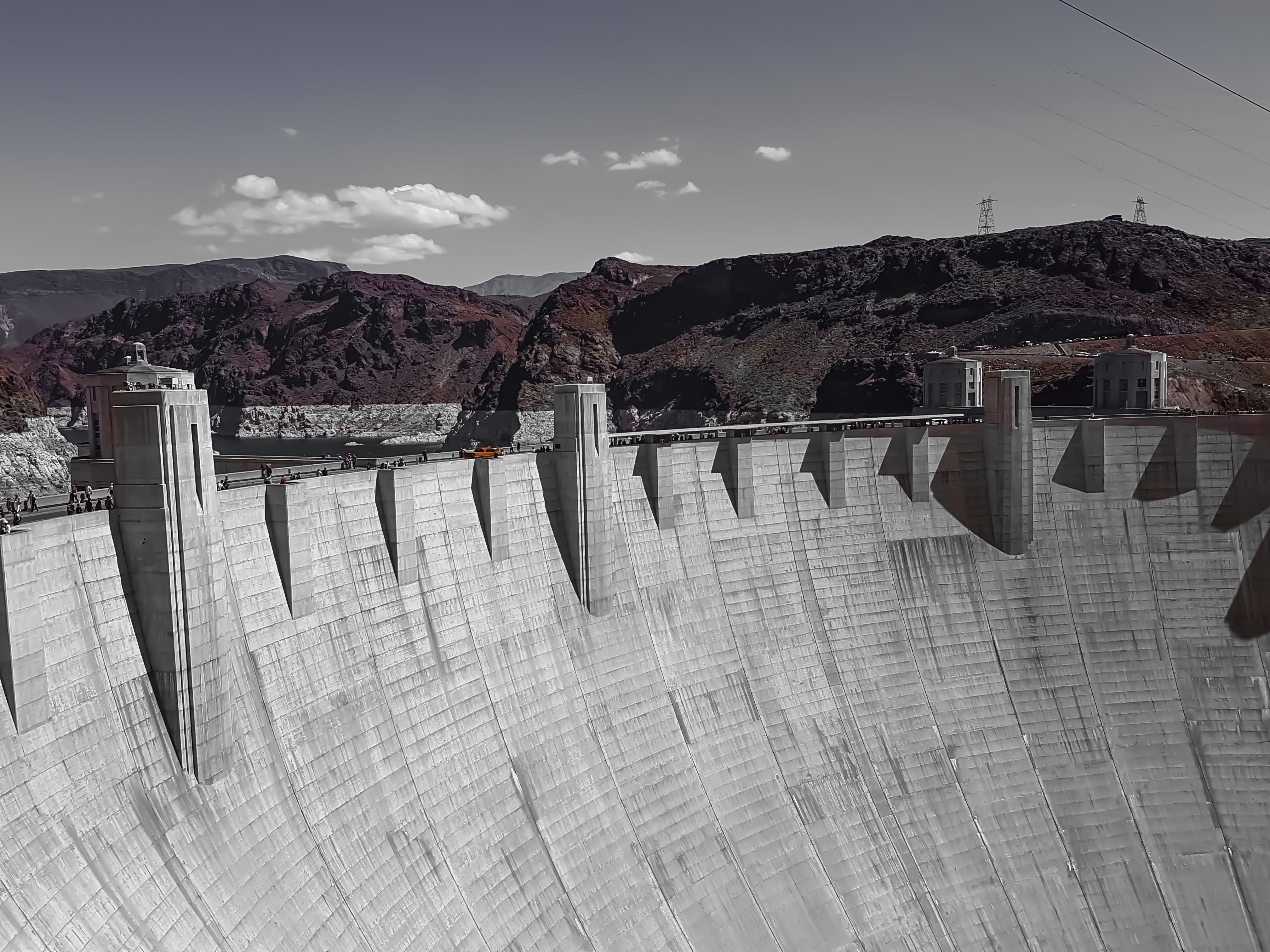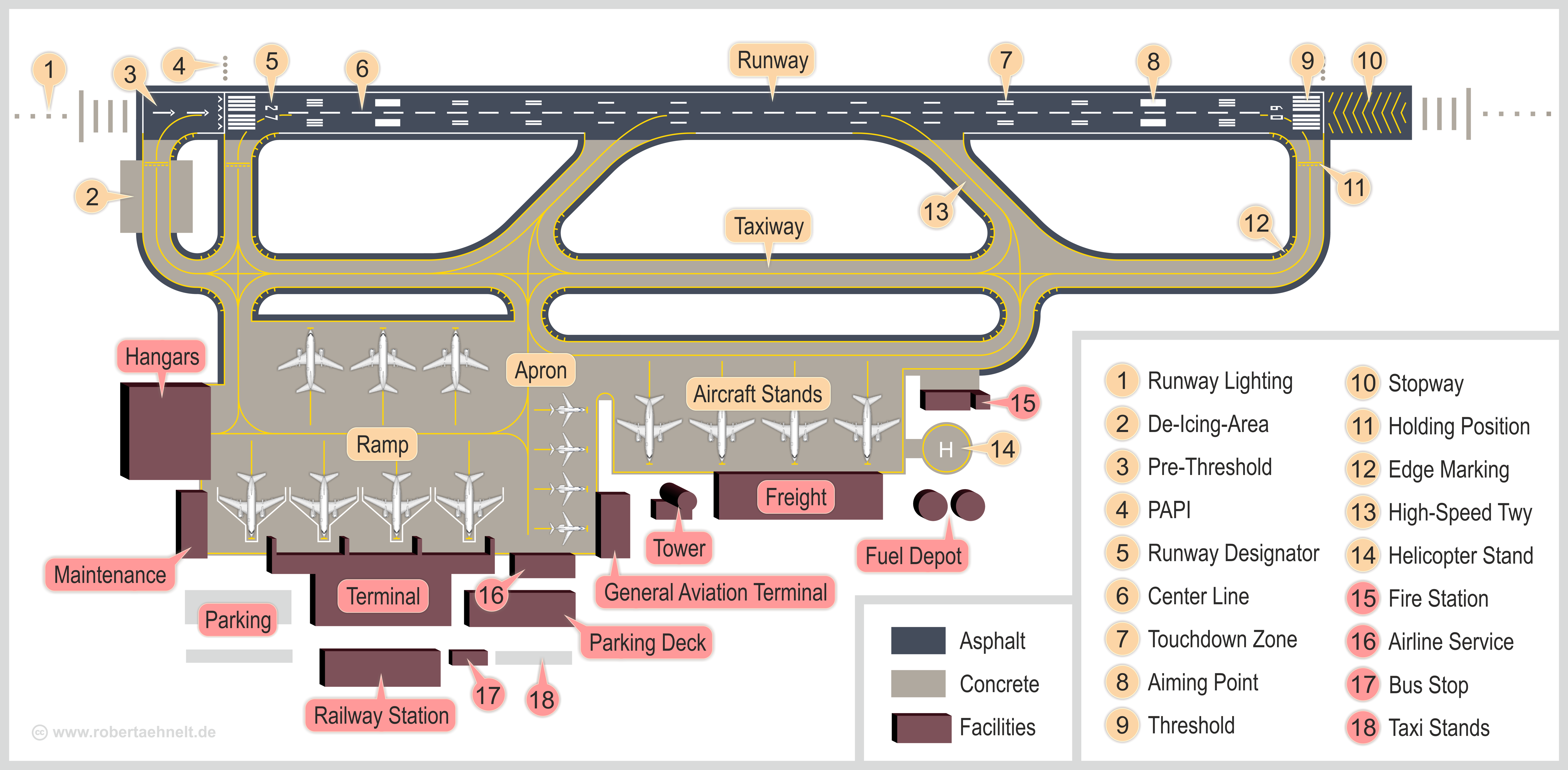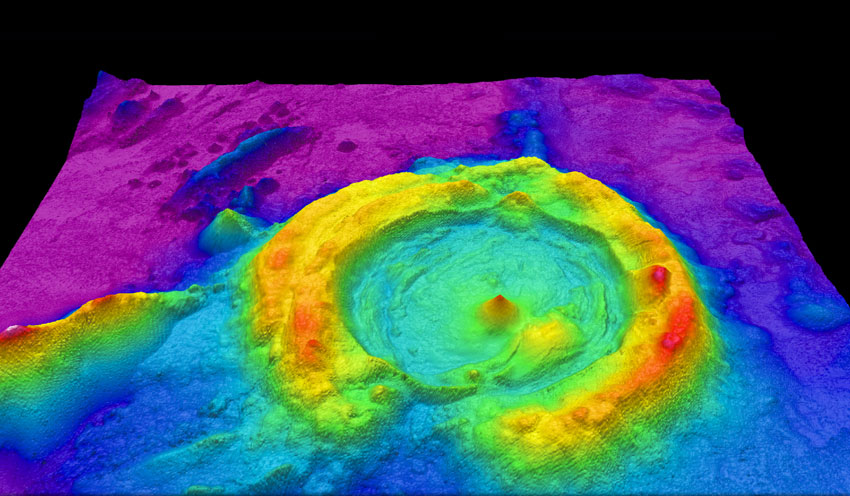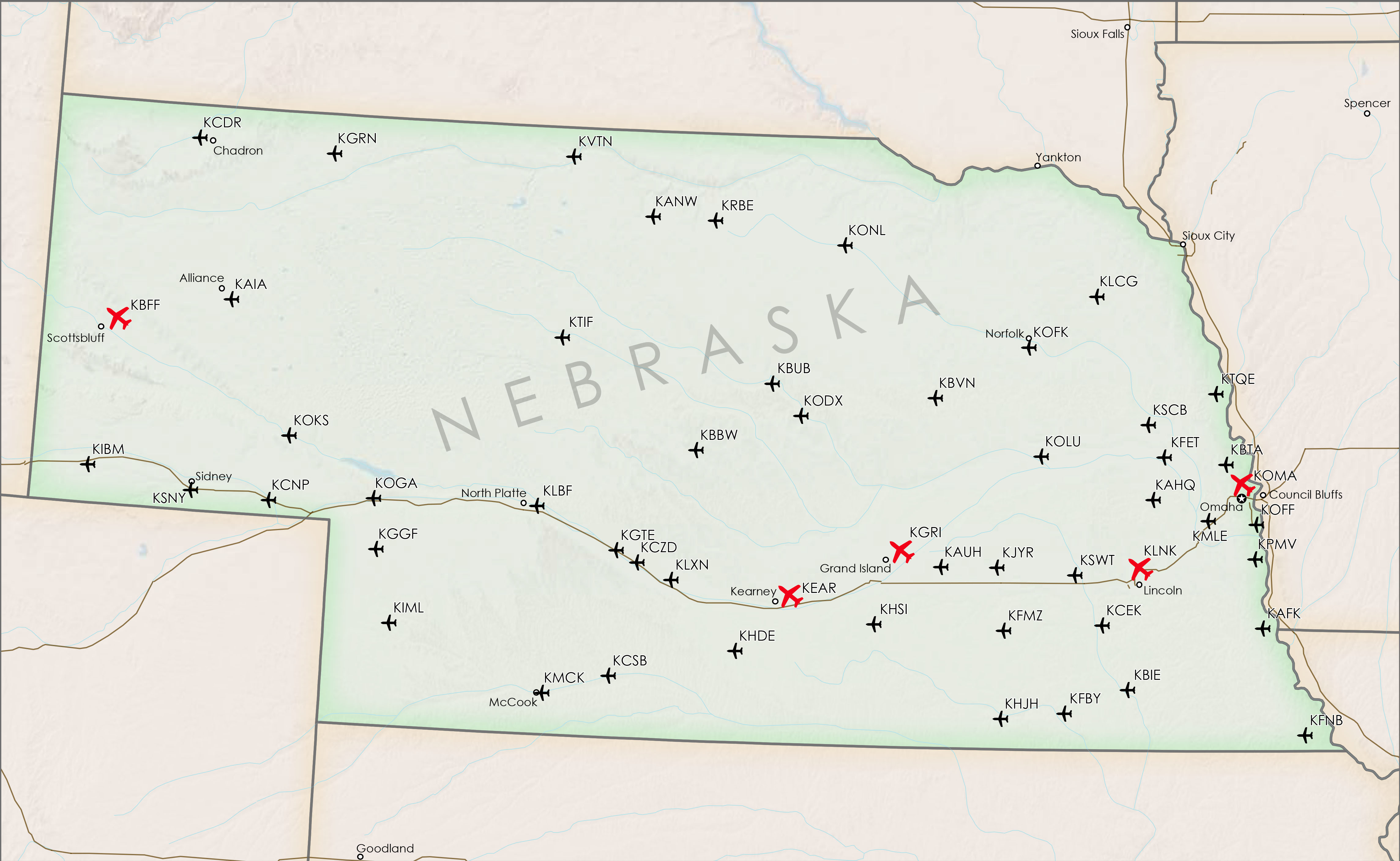|
Jim Kelly Field
Jim Kelly Field is a public use airport two miles northwest of Lexington, in Dawson County, Nebraska. Facilities Jim Kelly Field covers at an elevation of 2,413 feet (736 m). It has two runways: 14/32 is 5,489 by 100 feet (1,673 x 30 m) concrete; 1/19 is 3,200 by 250 feet (975 x 76 m) turf. In the year ending August 4, 2021, the airport had 10,640 aircraft operations, average 29 per day: 96% general aviation, 4% air taxi and <1% military. See also *List of airports in Nebraska
This is a list of airports in Nebraska (a U.S. state), grouped by type and sorted by location. It contains all public-use and military airports in the state. Some private-use and former airports may be included where notable, such as airports that ...
Referen ...
|
Lexington, Nebraska
Lexington is a city in Dawson County, Nebraska, United States. The population was 10,348 at the 2020 census. It is the county seat of Dawson County. Lexington is located in southern Nebraska, on the Platte River, southeast of North Platte. It sits along the route of U.S. Route 30 and the Union Pacific Railroad. In the 1860s, Lexington was the location of a stop along the Pony Express. History Lexington began as a frontier trading post in 1860.History , City of Lexington Official Homepage The post was later destroyed. Fort Plum Creek was established near its ruins in 1864. Lexington was founded in 1871. It was originally called Plum Creek. Plum Creek Railroad Attack About 3 1/2 miles miles west on route 30, a marker identifies the place where a band of |
Concrete
Concrete is a composite material composed of fine and coarse aggregate bonded together with a fluid cement (cement paste) that hardens (cures) over time. Concrete is the second-most-used substance in the world after water, and is the most widely used building material. Its usage worldwide, ton for ton, is twice that of steel, wood, plastics, and aluminum combined. Globally, the ready-mix concrete industry, the largest segment of the concrete market, is projected to exceed $600 billion in revenue by 2025. This widespread use results in a number of environmental impacts. Most notably, the production process for cement produces large volumes of greenhouse gas emissions, leading to net 8% of global emissions. Other environmental concerns include widespread illegal sand mining, impacts on the surrounding environment such as increased surface runoff or urban heat island effect, and potential public health implications from toxic ingredients. Significant research and developmen ... [...More Info...] [...Related Items...] OR: [Wikipedia] [Google] [Baidu] |
Grass
Poaceae () or Gramineae () is a large and nearly ubiquitous family of monocotyledonous flowering plants commonly known as grasses. It includes the cereal grasses, bamboos and the grasses of natural grassland and species cultivated in lawns and pasture. The latter are commonly referred to collectively as grass. With around 780 genera and around 12,000 species, the Poaceae is the fifth-largest plant family, following the Asteraceae, Orchidaceae, Fabaceae and Rubiaceae. The Poaceae are the most economically important plant family, providing staple foods from domesticated cereal crops such as maize, wheat, rice, barley, and millet as well as feed for meat-producing animals. They provide, through direct human consumption, just over one-half (51%) of all dietary energy; rice provides 20%, wheat supplies 20%, maize (corn) 5.5%, and other grains 6%. Some members of the Poaceae are used as building materials ( bamboo, thatch, and straw); others can provide a source of ... [...More Info...] [...Related Items...] OR: [Wikipedia] [Google] [Baidu] |
Federal Aviation Administration
The Federal Aviation Administration (FAA) is the largest transportation agency of the U.S. government and regulates all aspects of civil aviation in the country as well as over surrounding international waters. Its powers include air traffic management, certification of personnel and aircraft, setting standards for airports, and protection of U.S. assets during the launch or re-entry of commercial space vehicles. Powers over neighboring international waters were delegated to the FAA by authority of the International Civil Aviation Organization. Created in , the FAA replaced the former Civil Aeronautics Board, Civil Aeronautics Administration (CAA) and later became an agency within the United States Department of Transportation, U.S. Department of Transportation. Major functions The FAA's roles include: *Regulating U.S. commercial space transportation *Regulating air navigation facilities' geometric and flight inspection standards *Encouraging and developing civil aeronautics, ... [...More Info...] [...Related Items...] OR: [Wikipedia] [Google] [Baidu] |
Airport
An airport is an aerodrome with extended facilities, mostly for commercial air transport. Airports usually consists of a landing area, which comprises an aerially accessible open space including at least one operationally active surface such as a runway for a plane to take off and to land or a helipad, and often includes adjacent utility buildings such as control towers, hangars and terminals, to maintain and monitor aircraft. Larger airports may have airport aprons, taxiway bridges, air traffic control centres, passenger facilities such as restaurants and lounges, and emergency services. In some countries, the US in particular, airports also typically have one or more fixed-base operators, serving general aviation. Operating airports is extremely complicated, with a complex system of aircraft support services, passenger services, and aircraft control services contained within the operation. Thus airports can be major employers, as well as important hubs for tou ... [...More Info...] [...Related Items...] OR: [Wikipedia] [Google] [Baidu] |
Dawson County, Nebraska
Dawson County is a county in the U.S. state of Nebraska. As of the 2010 United States Census, the population was 24,326. Its county seat is Lexington. Dawson County is part of the Lexington, NE Micropolitan Statistical Area. In the Nebraska license plate system, Dawson County is represented by the prefix 18 (it had the 18th-largest number of vehicles registered in the county when the license plate system was established in 1922). History Dawson County was established by the territorial legislature in 1860; it officially became a county in 1871 by proclamation of acting Governor William James. The county website states that the county was named for Jacob Dawson, the first postmaster in the settlement of Lancaster County, Nebraska. Other sources offer another possibility: that it was named after Pennsylvania Congressman John Littleton Dawson; Geography Dawson County lies near the center of Nebraska, in the portion of the state that observes Central Time. According to the U ... [...More Info...] [...Related Items...] OR: [Wikipedia] [Google] [Baidu] |
Nebraska
Nebraska () is a state in the Midwestern region of the United States. It is bordered by South Dakota to the north; Iowa to the east and Missouri to the southeast, both across the Missouri River; Kansas to the south; Colorado to the southwest; and Wyoming to the west. It is the only triply landlocked U.S. state. Indigenous peoples, including Omaha, Missouria, Ponca, Pawnee, Otoe, and various branches of the Lakota (Sioux) tribes, lived in the region for thousands of years before European exploration. The state is crossed by many historic trails, including that of the Lewis and Clark Expedition. Nebraska's area is just over with a population of over 1.9 million. Its capital is Lincoln, and its largest city is Omaha, which is on the Missouri River. Nebraska was admitted into the United States in 1867, two years after the end of the American Civil War. The Nebraska Legislature is unlike any other American legislature in that it is unicameral, and its members a ... [...More Info...] [...Related Items...] OR: [Wikipedia] [Google] [Baidu] |
Elevation
The elevation of a geographic location is its height above or below a fixed reference point, most commonly a reference geoid, a mathematical model of the Earth's sea level as an equipotential gravitational surface (see Geodetic datum § Vertical datum). The term ''elevation'' is mainly used when referring to points on the Earth's surface, while '' altitude'' or '' geopotential height'' is used for points above the surface, such as an aircraft in flight or a spacecraft in orbit, and '' depth'' is used for points below the surface. Elevation is not to be confused with the distance from the center of the Earth. Due to the equatorial bulge, the summits of Mount Everest and Chimborazo have, respectively, the largest elevation and the largest geocentric distance. Aviation In aviation the term elevation or aerodrome elevation is defined by the ICAO as the highest point of the landing area. It is often measured in feet and can be found in approach charts of the aerodrome ... [...More Info...] [...Related Items...] OR: [Wikipedia] [Google] [Baidu] |
Concrete
Concrete is a composite material composed of fine and coarse aggregate bonded together with a fluid cement (cement paste) that hardens (cures) over time. Concrete is the second-most-used substance in the world after water, and is the most widely used building material. Its usage worldwide, ton for ton, is twice that of steel, wood, plastics, and aluminum combined. Globally, the ready-mix concrete industry, the largest segment of the concrete market, is projected to exceed $600 billion in revenue by 2025. This widespread use results in a number of environmental impacts. Most notably, the production process for cement produces large volumes of greenhouse gas emissions, leading to net 8% of global emissions. Other environmental concerns include widespread illegal sand mining, impacts on the surrounding environment such as increased surface runoff or urban heat island effect, and potential public health implications from toxic ingredients. Significant research and developmen ... [...More Info...] [...Related Items...] OR: [Wikipedia] [Google] [Baidu] |
General Aviation
General aviation (GA) is defined by the International Civil Aviation Organization (ICAO) as all civil aviation aircraft operations with the exception of commercial air transport or aerial work, which is defined as specialized aviation services for other purposes. However, for statistical purposes ICAO uses a definition of general aviation which includes aerial work. General aviation thus represents the " private transport" and recreational components of aviation. Definition The International Civil Aviation Organization (ICAO) defines civil aviation aircraft operations in three categories: General Aviation (GA), Aerial Work (AW) and Commercial Air Transport (CAT). Aerial work operations are separated from general aviation by ICAO by this definition. Aerial work is when an aircraft is used for specialized services such as agriculture, construction, photography, surveying, observation and patrol, search and rescue, and aerial advertisement. However, for statistical purpo ... [...More Info...] [...Related Items...] OR: [Wikipedia] [Google] [Baidu] |
Air Taxi
An air taxi is a small commercial aircraft that makes short flights on demand. In 2001 air taxi operations were promoted in the United States by a NASA and aerospace industry study on the potential Small Aircraft Transportation System (SATS) and the rise of light-jet aircraft manufacturing. Since 2016, air taxis have reemerged as part of the burgeoning field of eVTOL. Regulation In Canada, air taxi operations are regulated by Transport Canada under Canadian Aviation Regulation 703. The Canadian definition of air taxi includes all commercial single-engined aircraft, multi-engined helicopters flown by visual flight rules by one pilot and all multi-engined, non-turbo-jet aircraft, with a maximum take-off weight or less and nine or fewer passenger seats, that are used to transport people or goods or for sightseeing. In the US, air taxi and air charter operations are governed by 14 CFR Part 135 and 14 CFR part 298 of the Federal Aviation Regulations (FAR). [...More Info...] [...Related Items...] OR: [Wikipedia] [Google] [Baidu] |
List Of Airports In Nebraska
This is a list of airports in Nebraska (a U.S. state), grouped by type and sorted by location. It contains all public-use and military airports in the state. Some private-use and former airports may be included where notable, such as airports that were previously public-use, those with commercial enplanements recorded by the FAA or airports assigned an IATA airport code. Airports See also * Essential Air Service * Nebraska World War II Army Airfields * Wikipedia:WikiProject Aviation/Airline destination lists: North America#Nebraska References Federal Aviation Administration (FAA): FAA Airport Data (Form 5010)from National Flight Data Center (NFDC), also available froAirportIQ 5010National Plan of Integrated Airport Systems (2017–2021) released 4 October 2016 Passenger Boarding (Enplanement) Data for CY 2016 (final) released October 2017 Nebraska Department of Aeronautics: Nebraska Department of Aeronautics Other sites used as a reference when compiling and upda ... [...More Info...] [...Related Items...] OR: [Wikipedia] [Google] [Baidu] |





.jpg)
.jpg)
